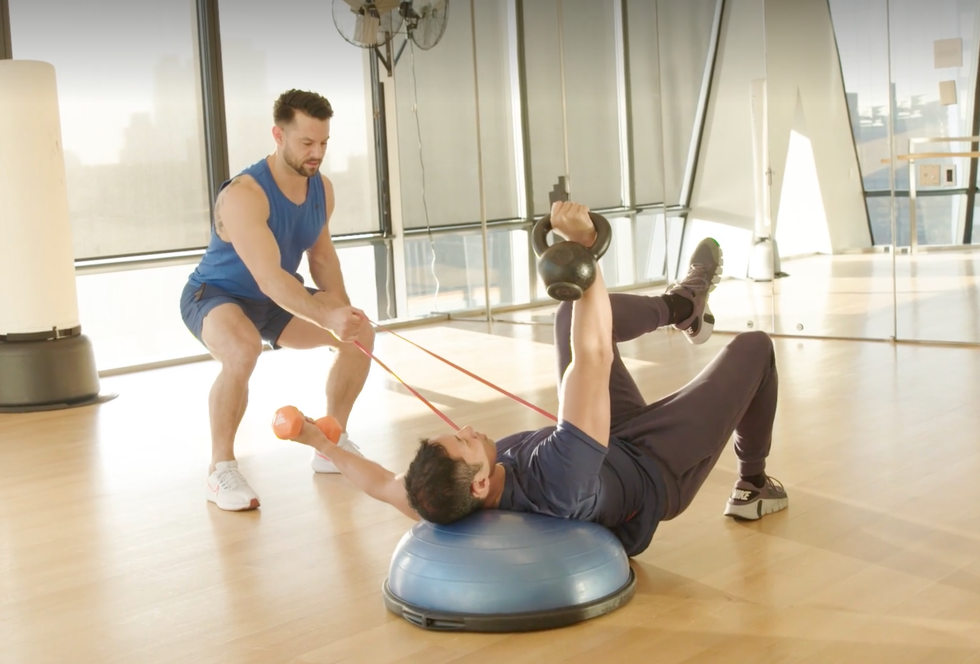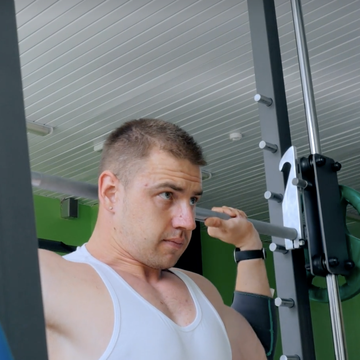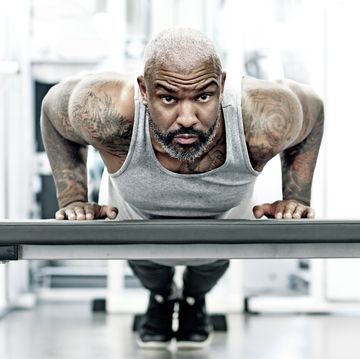IF YOU WORK OUT regularly, you've probably heard someone in the gym expound upon the values of "muscle confusion." This technique is essentially throwing a whole bunch of forms of stimulus at your body to keep yourself from acclimating to any single one. But if you're not a newbie, you're likely well aware that hitting your fitness goals can be a daily challenge even using normal protocols—so why would anyone want to add any additional "confusion" to their routine?
To date, there’s little to no scientific evidence supporting the efficacy of muscle confusion. And yet, this meathead myth still floats around in certain gym circles—you've seen the guys jumping from station to station with no discernible strategy, amped up to begin their workouts and then, inevitably, wiped out before finishing.
If you know of anyone who may want to test the idea that wild exercises and creative social media schemes can replace the tried and true method of progressive overload, then be a friend and steer them away from this overrated waste of gym time. Both Men's Health fitness director Ebenezer Samuel, C.S.C.S., and trainer Mathew Forzaglia, N.F.P.T., C.P.T., founder of Forzag Fitness, agree: muscle confusion training is just not worth your time.
“If it looks really flashy, turn the other way,” Forzaglia advises. “Because nine times out of 10, the benefit is not going to be there.”
3 Reasons Why You Should Avoid Muscle Confusion Training
Muscle Confusion Training Limits Movement Mastery
In order to get stronger, more muscular, and even more athletic, you'll need to master the movements required for achieving any of these goals. This takes repetition. Think about it: If you’re deadlifting just once every 30 days, you're not going to reinforce the movement pattern. Think about just how much better and stronger are you going to get at deadlifting if you make it a focus.
“If you're constantly changing up your workout and doing all these newfangled movements, then all of a sudden you're not hitting the basics,” Samuel says. “You're not bench pressing, you're not rowing, you're not doing your deadlifts. If you are doing an exercise once a month, that’s 12 times a year! That is not enough to really help you get better.”
Muscle Confusion Limits Progressive Overload
Muscles eventually will adapt to the same movements over time, which is why it’s important to keep challenging the muscles. But the path to growth isn't through switching exercises—instead you'll want to increasing the challenge over time, through load, volume, or otherwise. Through progressive overload, defined as a systematic increase in training frequency, volume, and intensity over time, you’re ultimately building more strength and muscle.
Achieving this again requires that you nail the movement mechanics of exercises such as deadlifts, squats, and bench presses. Consistent work, perhaps even twice a week, should lead to gains over time. This is the challenge your muscles need to make gains.
Muscle Confusion Means You Probably Have No Plan
Going into a workout with no clear idea of sets, reps, or even the exercises you want to perform is a recipe for useless chaos, not gains. Constantly scouring social media for the newest, trendiest (and oftentimes oddest) exercises may lead you in the opposite direction when it comes to getting bigger, better, or stronger.
Having a basic plan heading into your workouts—from exercises, sets, reps, even rest times—is the right approach toward consistent progression and growth.
“You want to think about keeping things simple, Samuel says. “You want to think about repeating the basics and know that you don't need to get away from those basics and fundamentals.”
3 Alternative Training Methods to Avoid Muscle Confusion
Choose 3 Exercises and Work on Them
Whatever your goal may be—stronger upper body, bigger arms, larger legs—select three exercises and work on them consistently three times a week. Do this for a month or two; work on technique, then continue to gradually increase the load, volume, or intensity. The better you get at training this exercise trio, the quality of gains will be coming your way, much quicker than if you were to continue randomly mixing things up.
Stick to the Program
Whatever you choose to focus on, resist any urge to switch it up after just a week or two. This should go double if you're getting "bored" or if you think you’re not seeing results quick enough. The gains will come—bear with the program.
However, a good idea to help avoid any type of boredom is to not change the movements, but shift the focus of the movements a little. Key on squeezing your glutes more while working on your bench presses, or switch some attention to your shoulder blade placement during certain exercises. A few training tweaks like these will also help lead to better technique and greater results.
Try the '2 and 2' Method
If you absolutely, positively cannot continue with the boredom of the repetitive workouts, there is a combination compromise of sorts you can try. It’s the 'two and two' method, and all you’re going to do is select a pair of foundational exercises—like a squat and deadlift—and hit those each of your three weekly workouts. Do not switch these out!
From there, feel free to add a selection of secondary exercises for your workout. But before you jump on the latest and craziest type of TikTok move you can search for, your best bet is to stick to some standard selections that have been covered in Men’s Health or even recommended by legitimate trainers. Now you’ve got the best of both workout worlds—the consistency of hitting the foundational movements hard and often with the variety of additional exercises. Let the gains begin.














